Are you a startup owner or a part of a social media marketing company?
Are you looking for invaluable social media marketing tips for online businesses?
Social media is beyond just creating accounts on every social network. We understand that simply creating social media accounts won’t guarantee success.
It’s crucial to delve into the intricacies of scheduling, performance analysis, user behavior, tracking, analytics, and strategic planning.
In this comprehensive post, we’re excited to share with you 23 indispensable social media marketing tips for any online businesses in 2025 and beyond. These tips go beyond the basics and provide actionable insights that will propel your social media efforts to new heights.
Social Media Marketing Tips for Any Online Businesses
1. Create a Calendar
Plan your content in advance. This will avoid the eleventh-hour scrambling. Moreover, prior content planning helps to come up with creative social media post design & content repurposing ideas.
Things to consider during calendar creation
- Choose the type of content you need to promote, whether it’s a blog, infographic, video, image, podcast, slide share, and so on
- A specific date, day, and time during which the content needs to be posted
- Type of social media network on which the promotion is to be done
- Special/important days to make a note of
- Link of the place where the parent content is located
- Copy to be posted along with the content
- Links, tags, and hashtags to be included
- Use different colors to identify the categories
- Use various formatting options
A social media calendar looks like something below,
2. Schedule Your Post
A proper schedule will streamline your social media activities like social media graphic designs and videos. Consistency is the key. Many brands have increased their number of followers because of their active presence and creative social media post designs across networks.
Free Social Media Scheduling Tools for Online Businesses


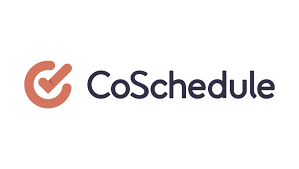

Tips to Schedule Your Social Media Activities
- Choose a social media scheduling tool
- Determine your posting schedule based on your target user’s availability, platform algorithms, special occasions, global popular events, what’s trending, etc.
- Create a content calendar
- Setup a posting frequency
- Respond promptly to users’ comments, queries, and interactions
- Use social media analytics to improve your posting schedule & content strategy
3. Repurpose the Content
Audiences vary in content consumption. Some only read blogs while some only watch videos, and some like listening to podcasts. This is where ‘content repurposing’ wins! Just write a blog, convert it into an infographic, short video, podcast, and so on.
Moreover, today people look for content variety. So, by implementing content repurposing, you can avoid monotony in your activity.
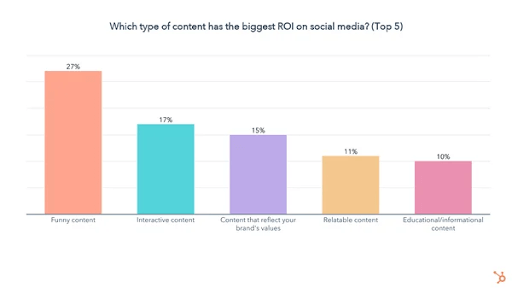
Tips for Repurposing the Content
- Understand the preferences of your target audience on different social media channels
- Look for evergreen content such as informative articles, tutorials, timeless tips, etc.
- Understand the potential of different content formats like blogs, articles, infographics, podcasts, and videos, and use them on platforms your audience seems active
- Break down the long-form content into easily biteable pieces
- Use customer testimonials, reviews, and user-generated posts for repurposing
4. Hashtags are the Key
Hashtags enhance visibility. They categorize and organize content based on what’s trending. By participating in trending hashtags, you’ll get a chance to join the people’s conversations and eventually understand their emotions, sentiments, views, & thoughts.
Do’s in identifying hashtags
Don’ts in identifying hashtags
- Monitor topics & hashtags that are widely discussed by users on social media networks
- Use social media analytics tools
- Stay up-to-date with the latest news, events, and discussions in your industry
- Identify keywords or phrases that are currently buzzing
- Pay attention to the content shared by your industrial influencers
- Check out the ‘trending’ sections on social media platforms
- Engage with online communities specific to your industry
- Don’t use irrelevant hashtags just for the sake of popularity
- Avoid using more than 5 hashtags in a post
- Don’t use banned, spammed, inappropriate, offensive hashtags
#Hashtags that Work Well for Brands
- Coke’s #ShareACoke generated over 18 million impressions for Coke and grew its Facebook page by over 870%.

- Oreo’s #OREODunkSweepstakes hashtag on Instagram pulled in celebrities like Christina Aguilera, Neymar, etc., to participate in the campaign.
- Metro Diner conducted a campaign on #NationalFriedChickenDay that offered a combo of chicken and waffles. With a budget of only $3,000, the campaign was a huge success. 4,324 plates of chicken and waffles were sold in just one day with a 377% increase from their day-to-day sales. To read the full case study, check out the link.
5. Collaborate with Influencers
Influencers have a significant following. This will give your business a broad exposure. Moreover, in a few cases, people count influencers as trustworthy and take heed of their recommendations. This gives you a loyal following.
Tips to Choose Your Influencers
- Select influencers whose content aligns with your brand’s values, industry, and target audience.
- Evaluate the number of likes, comments, and shares influencers receive and the quality of the engagement.
- Consider the influencer’s reach and the demographics of their followers that in line with yours
- Research the influencer’s reputation, values, and previous brand collaborations.
- Consider building long-term partnerships.
Gymshark’s collab with athletes & popular sports persons gets them more impressions and reach.
Also Read
6. Interact with Your Audience
Responding promptly to comments and messages shows that you listen to your followers. It will build trust & confidence for your brand. While interacting with a massive group, you can know their preferences.
Tips for Boosting Interaction with Your Audience
- Respond to comments, messages, and mentions
- Encourage user-generated content
- Conduct polls, quizzes, surveys, etc., frequently
- Share stories of behind-the-scenes
- Ask open-ended questions related to your industry, products, or current trends
- Host live sessions
- Run giveaway contests
- React to user’s comments on posts
- Ask users to tag their friends/followers
- Apologize for bad experiences. Be kind
- Time taken for reverting also matters
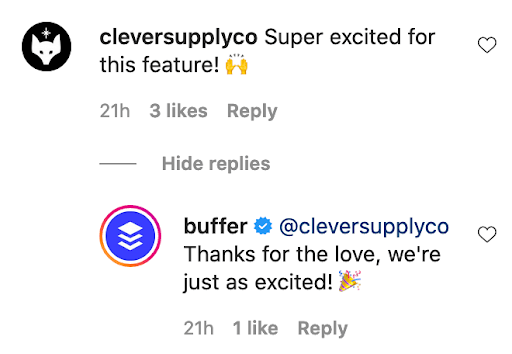
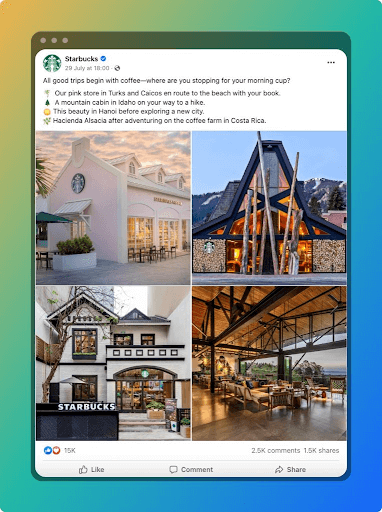
To make a note of, show genuine interest in responding to your audience’s thoughts & queries. Don’t react just for the sake.
7. Encourage UGC
User-generated content (UGC) encourages active participation among your followers. This will boost your overall engagement & interaction rate, and also visibility. The best option for cost-effective content creation. Builds a sense of community.
How to Encourage UGC Campaigns?
- Communicate clearly your desire for UGC – just share experiences via text, before-and-after photos, trying out videos, and so on
- Offer incentives/rewards to users who share UGC – discounts, offers, giveaways, etc.
- Ensure you like, comment, tag, and share user’s content
- Develop your own unique branding hashtags to include in UGC
- Organize UGC contests/challenges with specific themes/requirements
- Partner with popular influencers and encourage them to share their experiences
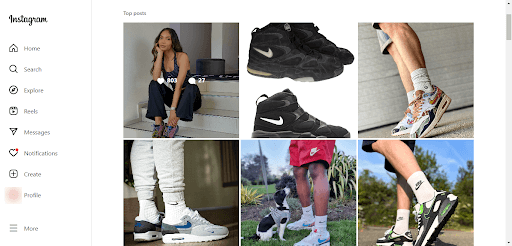
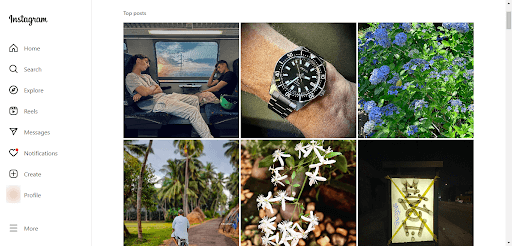
8. Build Community
Communities hold people with specific interests, hobbies, industries, or demographics. So, your content can easily resonate with them. When community members have positive experiences with a brand, they are likely to share their experiences and recommendations with others in the community. It empowers direct engagement and facilitates word-of-mouth marketing.
Brands that are Successful in Building Communities
First Coast News started a social media community – First Coast News Weather Watchers on Facebook. It enables users to ask questions about local weather, share photos & videos of weather, and speak to First Coast News meteorologists within the community.
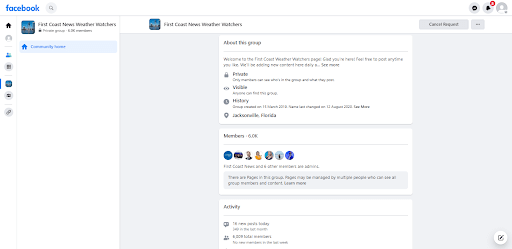
How to Effectively Engage with Your Social Media Communities?
- Ask questions, seek opinions, or initiate discussions on topics related to your community’s interests
- Encourage members to share their thoughts and experiences about your product, services, brand, content
- Respond to comments and actively participate in the conversations
- Initiate discussions about trending hashtags/topics
- Participate in challenges and talk about it
- Organize giveaway contests and award users
- Encourage members to create and share their own content related to your brand
- Repost or feature their content to acknowledge their contributions at the same time motivate others to participate
- Host live sessions, webinars, or Q&A sessions
- Encourage members to ask questions, provide insights, and share their expertise
- Conduct polls or surveys to gather opinions, preferences, or feedback
9. Post Live Demos/tutorials
Showcase your products/services in action. By demonstrating how your offerings can solve problems, meet needs, or provide unique benefits, you effectively communicate the value proposition to your audience. Moreover, going live would humanize your brand and enable the audience to ask questions, leave comments, and interact with you in real time.
Popular Brands – Demo Videos
- IKEA – https://youtu.be/UudV1VdFtuQ
- Zoom Meetings – https://youtu.be/VnyitUU4DUY
- Slack – https://youtu.be/6c7_TpPUpL0
10. Showcase Customer Reviews
Customer reviews provide social proof and build trust among potential customers. This trust helps in overcoming skepticism and encourages prospects to take action. By sharing authentic customer reviews, you can show that your products & services are tried and tested by real people.
Positive customer reviews act as recommendations and influence purchase decisions. When these reviews are shared on social media, they contribute to the overall search engine optimization (SEO) efforts too.
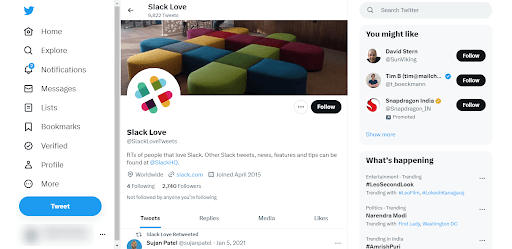
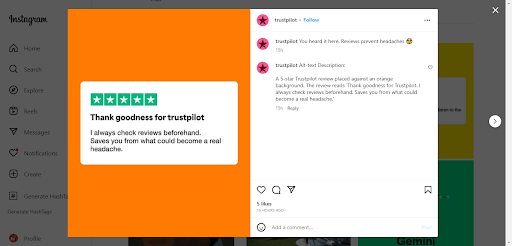
Also Read
11. Support NPOs & Social Causes
Following NPOs and supporting social media causes can foster a positive perception of your brand and enhance your brand’s reputation. Social causes often have dedicated communities and followers. By associating with these causes, you can tap into their networks.
Supporting social causes on social media humanizes your brand. It demonstrates that you are more than just a profit-driven entity and care about issues beyond your business interests.
Showcasing your involvement should be accompanied by meaningful actions, such as fundraising, volunteering, direct contributions, etc.
12. Run Giveaway Contests
Giveaway contests drive user engagement. When participants enter the contest, they often share it with their friends, family, and followers, extending the reach of your brand and content organically.
It encourages participants to create and share content related to your brand or the giveaway itself. Giveaways offer an opportunity to collect valuable data from participants. You can ask for email addresses, demographic information, or specific preferences, enabling you to build a targeted marketing list and gain insights into your audience.
13. Host Q/A Sessions
Q&A sessions create opportunities for followers to ask questions, seek advice, and engage directly with your brand. By providing helpful and informative responses, you demonstrate your expertise and build trust with your audience as a thought leader.
These sessions provide valuable insights into your audience’s preferences, needs, and pain points. By actively listening to the questions asked, you can gain a better understanding of your target market, their interests, and the challenges they face. This information can be used to tailor your marketing strategies, content creation, and product/service development.
14. Like, Comment On, & Share Someone Else’s Posts
When you engage with others’ content, your username, profile picture, or brand logo may be visible, providing exposure for your brand. This can pique the interest of users who may click through to your profile or page, potentially leading to new followers or customers.
By sharing high-quality content from others within your industry, encourages reciprocity, as others may be more likely to engage with and share your content in return. By demonstrating genuine interest and support, you may catch the attention of content creators, influencers, or businesses who could be interested in working with you on joint initiatives, sponsored content, or cross-promotions.
15. Conduct Interviews
Sharing insightful interviews positions you as a trusted authority within your niche, attracting followers who are interested in valuable industry insights. When you conduct interviews with notable experts, you tap into their existing networks.
Interviews actually lead to future collaborative projects, guest appearances, or joint marketing initiatives, helping to expand your brand’s reach. Moreover, you can transcribe the interview into blog posts, create video or audio snippets, or extract key insights for social media posts.
Also Read
16. Create Memes & Trolls
Memes are highly shareable and have the potential to go viral. By creating and sharing memes that your audience finds relatable, you can foster a sense of connection and build an emotional bond with your followers.
Memes often draw inspiration from current trends, pop culture references, or viral moments. By staying up to date with popular memes, you can tap into the cultural conversation and create content that is relevant and timely.
When users discover and enjoy your memes, they are more likely to follow your page or account to see more of your content. This can help grow your social media following, expanding your reach and increasing the impact of your marketing efforts.
However, it’s important to note that creating memes for your business requires careful consideration of your target audience, brand image, and appropriateness. It’s crucial to ensure that the memes align with your brand values and don’t offend or alienate your audience.
17. Post Behind-the-scenes
Sharing behind the scenes provides a glimpse into the inner workings, processes, and personalities behind your brand, giving your audience a more genuine and transparent view. By demonstrating how your offerings are created, tested, or used, you provide visual proof of their quality and value.
Behind-the-scenes content can elicit customer engagement and feedback. Generates buzz and excitement around upcoming products, events, or initiatives. By providing sneak peeks or teasers, you create anticipation and curiosity among your followers.
18. Create Polls
By creating polls, you invite your followers to engage with your content, express their opinions, and make choices. Polls can serve as a valuable tool for collecting data and conducting market research. Gather feedback directly from your audience. You can ask your followers for input on potential topics, formats, or features they would like to see in your content.
By analyzing the responses to your polls, you can identify different segments within your audience and tailor your marketing messages or content to specific groups. In addition, engaging polls have the potential to go viral, especially when they address popular topics, trends, or debates.
Few Common Tips to Keep in Mind
19. Do a Social Media Audit
How does social media audit help in social media marketing?
- Assess the performance of your existing social media strategies
- Measure the impact of your current activities on social networks
- Understand what’s working & what’s not working and look for improvements
- Refine your target demographics, content strategy, and platform type
- Review profile information, tone, voice, privacy policies, and advertising guidelines
20. Do a competitor analysis
Why competitor analysis is required?
- Take insights and inspirations from their approaches
- Identify unique areas where you can differentiate your brand
- Gain insights into their audience demographics, interests, and preferences
- Identify gaps and discover untapped opportunities in the market
- Address any negative sentiment or misinformation about your brand
- Identify areas where you are outperforming your competitors and areas where you can improve
Also Read
21. Analyze Your Audience
How does analyzing audience helps in social media marketing?
- Tailor your messaging and content to resonate with the audience’s specific needs and desires
- Determine the type of content that will be most relevant and engaging to them
- Understand their interests and pain points
- Identify the social media platforms where your target audience is most active
- Find different segments or personas within your target audience for personalization
22. Choose the Right Platforms
Why does platform type matter for social media?
- Reach the right audience who are more likely to engage with and convert through your content
- Leverage each platform’s unique capabilities and optimize your content strategy to resonate with the platform’s users
- Avoids spreading yourself thin across multiple platforms
- Focus on building a deep understanding of the platforms, mastering their algorithms, best practices and engagement tactics
- Assess the competition, identify gaps in the market, and strategically position your brand on platforms where your competitors may be less active or successful
- Leverage emerging trends across each platform
23. Create Content Wisely
The content you create and share reflects your brand’s image and values. Posting inappropriate or poorly thought-out content can damage your brand’s reputation and diminish trust among your audience.
Social media algorithms analyze factors like engagement, relevance, and quality to determine which content appears in users’ feeds. High-quality, well-optimized content is more likely to be favored by algorithms, leading to increased visibility and organic reach.
By understanding every platform-specific nuance, you should optimize your content creation.
Free Tools for Social Media Marketing
- Hootsuite – To schedule posting
- Canva – To create images, graphics, slideshares, carousels, etc.
- Lumen – To create videos
- Chatgpt – To generate content
- Dall-E – To generate images
- Bitly – To shorten the URL
- Google Analytics – To track the performance
- TweetDeck – To manage Twitter account
- Facebook Insights – To manage your Facebook account
- Instagram Insights – To manage an Instagram account
Social Media Platforms


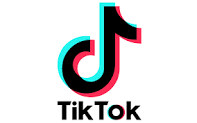

Understanding the Social Media Campaign Metrics
- Reach – Number of unique people who see a social media post
- Impression – Number of times a post is displayed to users
- Engagement – Number of likes, comments, clicks, shares, or direct messages on an individual post or for an entire account
- Engagement rate – Percent of reached users engaging in a post
- Engagement rate = Post engagement post reach
- Click-through-rate – Percent of people who click on the link within a post
- Click-through-rate = Post link clicks/post impressions
- Cost-per-click (CPC) – Amount to be deducted for every click a post receives
- CPC = Ad spend / Number of clicks
- Conversion rate – Percent of users taking action
- Conversion rate = Number of impressions / Number of people who take a desired action
- Return on investment (ROI) – Profitability in a social media campaign
- ROI = profits attributable to a campaign / Total campaign cost
- Mentions – Number of times users mention the brand’s name on social networks
Best Content Types for Each Social Platform
Not every piece of content performs the same across all social platforms—what earns tons of engagement on Instagram might barely make a ripple on LinkedIn. To maximize impact, tailor your content to fit how users interact on each channel.
Here’s a quick breakdown of what works best:
- Instagram: Carousel posts (multi-image slides) and short-form videos like Reels grab the most attention. Think behind-the-scenes clips, tips, or quick transformations that showcase personality and creativity.
- Facebook: Native videos and striking image posts drive strong engagement. Hosting live sessions can also spark real-time conversations with your audience.
- LinkedIn: Thought leadership articles, infographics, and insightful native posts perform well—perfect for building credibility and connecting with professionals and decision-makers.
- Twitter (X): Short videos, polls, and eye-catching visuals paired with trending hashtags can amplify your visibility and invite quick interactions.
- Pinterest: Professionally designed pins and infographics excel here, especially when tied to tutorials, step-by-step guides, or product inspiration.
- TikTok: Creative, bite-sized videos using trending sounds or challenges have high viral potential and can help you grow organically.
Ultimately, there’s no one-size-fits-all formula. Test different formats, track engagement, and focus on what resonates most with your audience on each platform.
Crafting a Smart Social Media Strategy for Small Businesses
Developing a successful social media strategy isn’t about guesswork it’s about building a plan rooted in clear objectives, audience understanding, and continuous improvement. Here’s how small businesses can create a social media presence that truly works for them:
1. Clarify Your Goals
Start by defining what success looks like for your business. Do you want to increase brand awareness, drive website traffic, generate leads, or nurture a loyal online community? Setting specific, measurable goals like increasing engagement by 20% in three months or achieving a set number of online sales gives your efforts purpose and direction.
2. Know Your Audience Inside and Out
Don’t try to reach everyone, focus on the people most likely to connect with your brand. Use analytics and social listening tools like Sprout Social or Buffer to understand who engages with your content, what they like, and when they’re most active. This insight ensures your posts speak directly to your ideal audience.
3. Analyze Your Competition
Before reinventing the wheel, study what similar businesses are doing well. Explore their tone, content style, and engagement levels. Tools such as SEMrush or SimilarWeb can reveal what drives their success and help you identify gaps or opportunities to stand out.
4. Choose Wisely: Pick the Right Platforms
Not all platforms are created equal. Facebook and Instagram remain staples for small businesses, but don’t overlook emerging spaces like TikTok or professional communities on LinkedIn. Prioritize platforms where your target customers already spend time. Strong engagement on one or two platforms’ beats spreading yourself too thin across many.
5. Plan and Schedule Your Content
A content calendar keeps your strategy consistent and stress-free. Map out your topics, post frequency, and formats mixing up visuals, videos, polls, and stories. Tools like Trello, Google Calendar, Buffer, or Later can help plan and automate posts so you maintain regular activity without last-minute rushes.
6. Seek Collaboration Opportunities
Social media is all about community. Partner with other small businesses, creators, or micro-influencers in your niche for shoutouts, contests, or collaborative content. Even commenting thoughtfully on others’ posts can boost your visibility and help build authentic relationships.
7. Make Analytics Your Best Friend
Data turns guesswork into strategy. Regularly review metrics like reach, engagement, and conversions using built-in platform analytics. This helps identify what’s working, refine underperforming areas, and double down on content that resonates most with your audience.
By aligning clear goals with audience insights and consistent optimization, small businesses can create a social media strategy that fuels real growth, meaningful engagement, and long-term success.
Focus on Your Niche Audience
Trying to appeal to everyone on social media often leads to your message getting lost in the noise. The smarter approach? Focus on your niche audience, the group of people who genuinely care about your products, services, or expertise. Whether it’s sneaker enthusiasts joining #AirMaxMondays, photography lovers browsing #ShotOnIphone, or local communities chatting about homegrown events, niche audiences are the ones most likely to engage, share, and advocate for your brand.
Here’s why narrowing your focus pays off:
- Better Engagement: Tailored content resonates more deeply, earning likes, shares, and meaningful conversations because it reflects your audience’s passions and needs.
- Stronger Loyalty: Niche audiences tend to form tight-knit communities, creating long-term loyalty and authentic word-of-mouth recommendations.
- Efficient Use of Resources: By investing in audiences who are already interested, your time and budget go further leading to a stronger ROI.
- Sharpened Messaging: When you clearly understand who you’re speaking to, your tone and message become more precise and powerful.
Use social media analytics and listening tools to uncover who’s already interacting with your content or following competitors in your space. Once you identify that core group, focus on consistently delivering value that keeps them coming back. Building a loyal niche audience may take time but it’s far more sustainable than chasing short-lived viral trends.
Realistic Follower Growth Benchmarks for 2025
Wondering what kind of social media follower growth you can realistically aim for in 2025? While results depend on your industry, engagement, and content strategy, here are typical weekly growth ranges for small businesses on major platforms:
- Facebook: Active business pages posting regularly can expect steady growth around 14–15% per week.
- TikTok: With its fast-moving short-form videos, follower increases are usually more modest, averaging 3–4% weekly.
- Instagram: Competition is high, so incremental growth of 1–2% per week is typical for consistent posting.
- LinkedIn: As a professional network, growth tends to be slower, generally under 1% per week for small businesses.
Remember: quality beats quantity. Engaged followers who interact with your content are far more valuable than a large audience that isn’t actively interested. Focus on consistently delivering value, and your follower base will grow sustainably over time.
Leverage Analytics to Understand What Works
For small businesses, analytics are the backbone of a smart social media strategy. Regularly reviewing your performance metrics available on most platforms for free reveals what connects with your audience and what needs a rethink.
Here’s how to make analytics work in your favor:
- Uncover Top-Performing Content: Pinpoint which posts drive the most engagement, shares, or clicks. Look for recurring patterns in timing, topics, or formats that consistently perform well.
- Spot Underperformers: Identify posts that fall flat low views, minimal reactions, or high bounce rates with and refine your visuals, captions, or messaging accordingly.
- Test and Refine: Experiment with new ideas through A/B testing or by tweaking hashtags, visuals, or tone. Track the outcomes to see what delivers stronger results.
- Stay Adaptive: Audience preferences evolve. Use analytics to detect shifts early so you can adjust content strategy in real time instead of relying on guesswork.
- Optimize Your Budget: If you’re running paid campaigns, analytics highlight which audience segments or content types yield the best ROI, helping you spend smarter.
Consistently analyzing your data turns insight into action, empowering your small business to grow a stronger, more engaging, and results-driven social media presence.
Ready to Implement these Tips in Real-time
Effective social media marketing for online businesses encompasses several key elements. Consistency in branding, digital marketing services, content strategy, platform selection, content format, target demographics, and staying up-to-date with trends are all crucial factors to consider.
Even if you are a startup, you don’t necessarily need to allocate a significant budget for social media marketing. Starting with a basic setup and utilizing free tools available in the market can be a viable approach.
However, there may come a time when your startup isn’t generating the desired engagement and leads, despite implementing these strategies. In such cases, it may be beneficial to seek support from a proficient social media marketing agency.
Professional agencies will be specialized in managing multiple social media profiles simultaneously, creating creative social media graphic design, and employing competitive strategies to drive results.
We are deeply passionate about crafting social media strategies tailored to your businesses. Feel free to explore our social media platforms as proof of our expertise in maintaining engaging profiles. If you trust that we can effectively work on your project, we welcome the opportunity to form a partnership. Simply drop us a message or give us a call at +91 (944).278.9110, and we will deliver exceptional results within your expected budget.
What’s Next?
Now that you’ve had the chance to explore our blog, it’s time to take the next step and see what opportunities await!

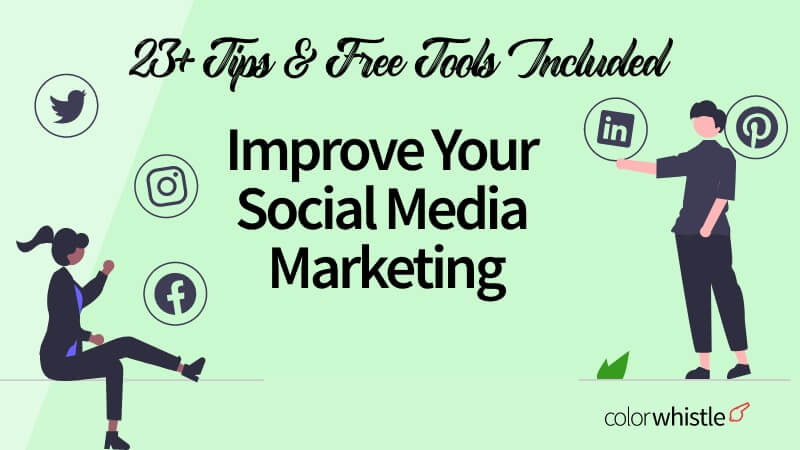
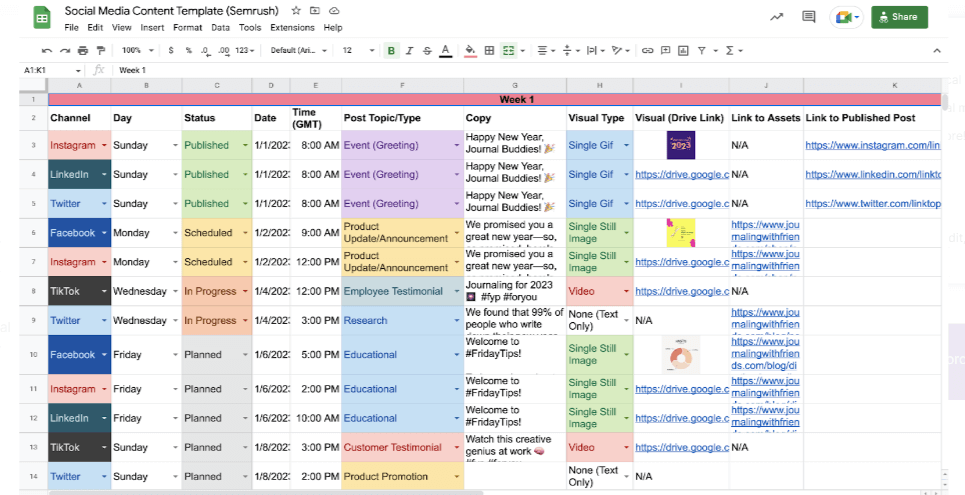
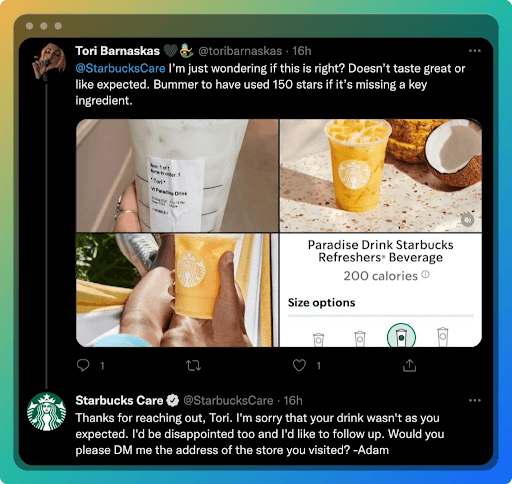
![AI in Social Media: Statistics and Trends Driving Content Creation [Facts + Insights] - ColorWhistle](https://colorwhistle.com/wp-content/uploads/2023/07/AI-in-Social-Media-Statistics-and-Trends-Driving-Content-Creation-Facts-Insights-ColorWhistle.jpg)
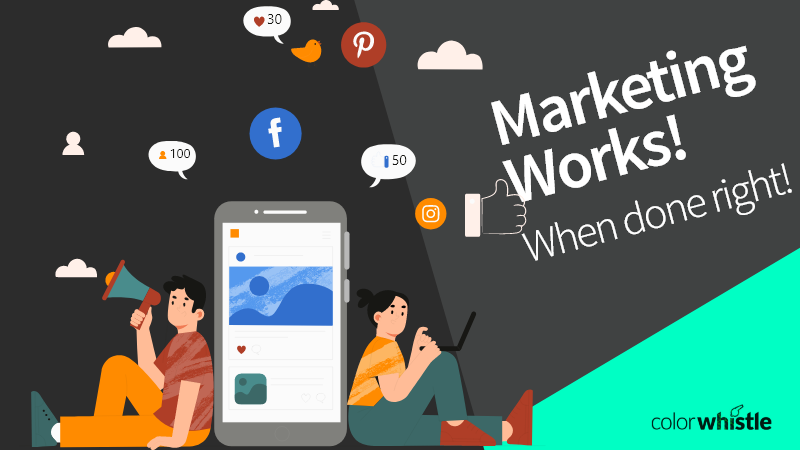
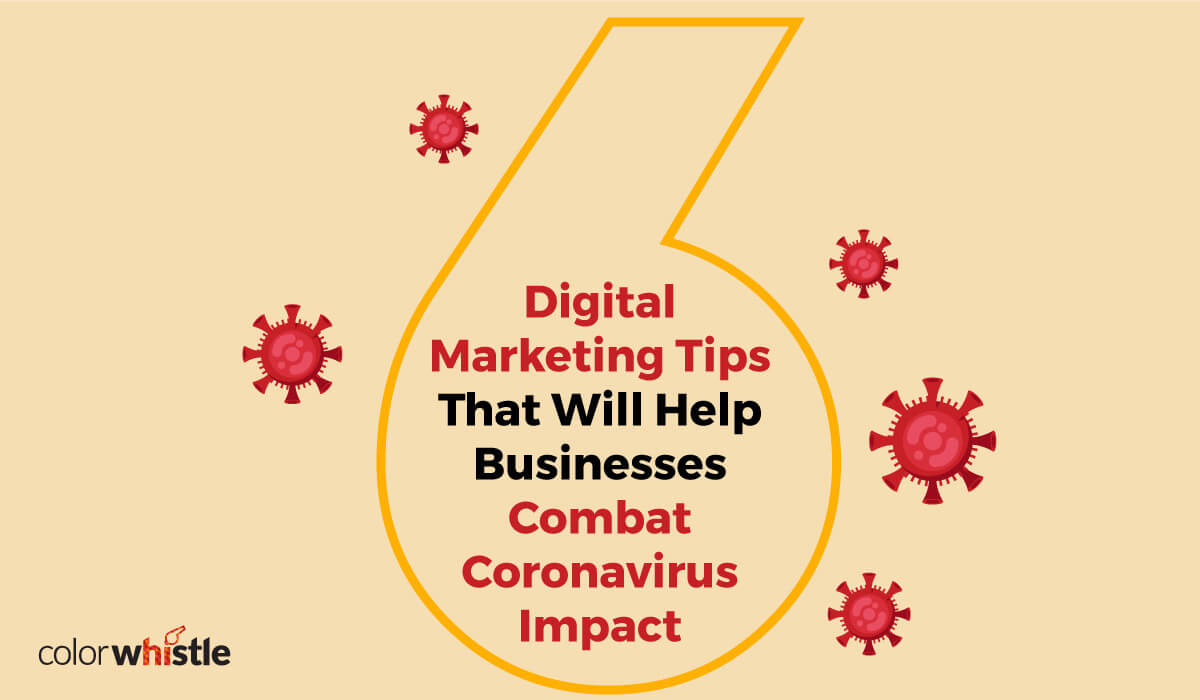

very informative and nice blog
Wow, what an insightful article! I truly appreciate the depth of knowledge you’ve shared on this topic. It’s clear that a lot of thought went into creating this content, and I learned so much from it. Keep up the great work, and I look forward to reading more! For those interested in learning more or diving into further topics, I highly recommend reading Linkedin marketing strategy Thanks again for such valuable information!